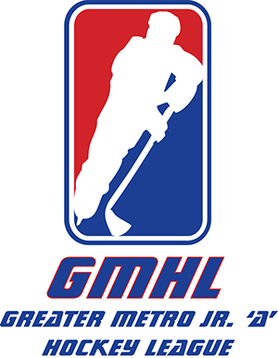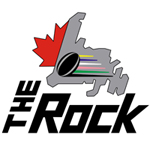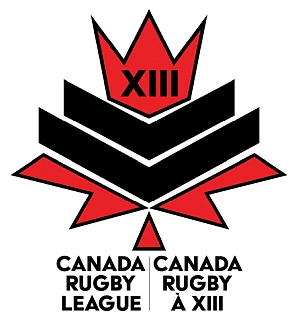
The Ontario Hockey League is one of the three major junior ice hockey leagues which constitute the Canadian Hockey League. The league is for players aged 16–20. There are currently 20 teams in the OHL: seventeen in Ontario, two in Michigan, and one in Pennsylvania.

The National Women's Hockey League (NWHL) was a women's ice hockey league established in Canada in service from 1999 to 2007. In its final season the league was run by the Ontario Women's Hockey Association.
The Churchill Cup was an annual rugby union tournament, held in June, contested by representative men's teams from Canada, England, the United States, and other invited teams from a wide array of countries.

The Hamilton Tiger-Cats are a professional Canadian football team based in Hamilton, Ontario, Canada. They are currently members of the East Division of the Canadian Football League (CFL). The Tiger-Cats play their home games at Tim Hortons Field.

Sports in Canada consist of a wide variety of games. The roots of organized sports in Canada date back to the 1770s, culminating in the development and popularization of the major professional games of ice hockey, lacrosse, basketball, baseball, soccer, football and cricket. Canada's official national sports are ice hockey and lacrosse. Golf, baseball, tennis, skiing, ringette, badminton, cricket, volleyball, cycling, swimming, bowling, rugby union, canoeing, curling, squash, and the study of martial arts are widely enjoyed at the youth and amateur levels. Great achievements in Canadian sports are recognized by Canada's Sports Hall of Fame, while the Lou Marsh Trophy is awarded annually to Canada's top athlete by a panel of journalists. There are numerous other Sports Halls of Fame in Canada.
The East Division is one of the two regional divisions of the Canadian Football League, its counterpart being the West Division. Although the CFL was not founded until 1958, the East Division and its clubs are descended from earlier leagues.

The Ontario Junior Hockey League (OJHL) is a Junior A ice hockey league in Ontario, Canada. It is under the supervision of the Ontario Hockey Association (OHA) and the Canadian Junior Hockey League (CJHL).
In 1970, the Junior A level was divided into two more levels, Tier I and Tier II. In 1974, the "Major Junior A" division of the OHA became the Ontario Major Junior Hockey League (OMJHL) and began to operate independently of the OHA. Finally in 1980, the OMJHL became the Ontario Hockey League.

The Greater Metro Junior A Hockey League (GMHL) is a Canadian developmental junior ice hockey league. The league has primarily had teams in the Greater Toronto Area, Central Ontario, Northeastern Ontario, and Quebec.

Rugby union is a moderately popular sport in Canada; it is quite strong as a participation sport, particularly in several hotspots like British Columbia, Atlantic Canada, the West Island of Montreal, Quebec City and Ontario but does not attract the same level of spectator support yet, likely because the CFL's popular brand of Canadian Football is still similar to rugby in many ways, whilst also being the dominant football code in the country. Rugby Canada is the administrative body for rugby union in Canada. Every province also has its own union.
The Newfoundland Rock are a Canadian rugby union team based in St. John's, Newfoundland and Labrador. The team plays in the Rugby Canada National Junior Championship (RCNJC) and draws most of its players from the Newfoundland Rugby Union, one of fourteen Rugby Unions that have representative teams in the RCNJC.

The Prairie Fire was a Canadian rugby union team based in Regina, Saskatchewan. The team played in the Rugby Canada Super League and the Rugby Canada National Junior Championship, which followed once the former was disbanded. The Fire drew most of their players from the Saskatchewan Rugby Union, one of fourteen Rugby Unions that had representative teams in the RCSL.

The city of Toronto, Ontario, Canada, has a long history of sport. It is home to a number of clubs, including the Granite Club, the Royal Canadian Yacht Club, the Toronto Cricket, Skating and Curling Club, the Argonaut Rowing Club, Toronto Argonauts football club, the Toronto Lawn Tennis Club, and the Badminton and Racquet Club. A number of heritage venues have developed in Toronto such as: Christie Pits, Coca-Cola Coliseum, Varsity Arena, and Maple Leaf Gardens. Toronto is also the location of the Canadian Football League's headquarters.
The Ontario Rugby Union (ORU) also known as Rugby Ontario is the provincial governing body for the sport of rugby union in the Canadian province of Ontario and a Provincial Union of Rugby Canada. Rugby Ontario governs various levels of rugby.

Atlantic Rock, also known as The Rock, are a Canadian rugby union team based in St. John's, Newfoundland and Labrador. The team plays in the Canadian Rugby Championship (CRC) and is intended to draw most of its players from the rugby unions of Canada's five Eastern provinces: Quebec, New Brunswick, Nova Scotia, Prince Edward Island (PEI) and Newfoundland & Labrador.

Canada Rugby League (CRL) is the governing body for the sport of rugby league football in Canada. Founded in 2010, the CRL organizes the Canada national rugby league team and supports the development of the game through the country's domestic competitions.
The 2011–12 CWHL season was the fifth in league history. Regular season play begun on October 22, 2011, as the defending champion Montreal Stars hosted the Brampton Thunder. The league expanded from five teams to six as Team Alberta (CWHL) joined the league for competitive play. The 2012 Clarkson Cup in Niagara Falls was also contested between the Stars and Thunder, with Montreal winning its second consecutive title.

York Lions Stadium is an outdoor sports stadium on the Keele Campus of Toronto's York University in the former city of North York. It is home to the York Lions, the varsity teams of York University, the Toronto Arrows of Major League Rugby and York United of the Canadian Premier League. The facility was primarily built for the 2015 Pan American and Parapan American Games, where it hosted track and field events and the opening ceremony. In 2021, the stadium's running track was removed to expand the playing surface used for football and soccer.

Raymond Barkwill is a retired Canadian rugby union player who played for a number of teams before ending his career at Seattle Seawolves of Major League Rugby where he helped win the inaugural title including scoring a try in the final. Ray also played for the Canada national rugby union team, and was the first Canadian to play in Super Rugby.

The Western Mustangs football team represents the University of Western Ontario in Canadian university football. The Mustangs compete as a member of the Ontario University Athletics (OUA), under the U Sports association.














